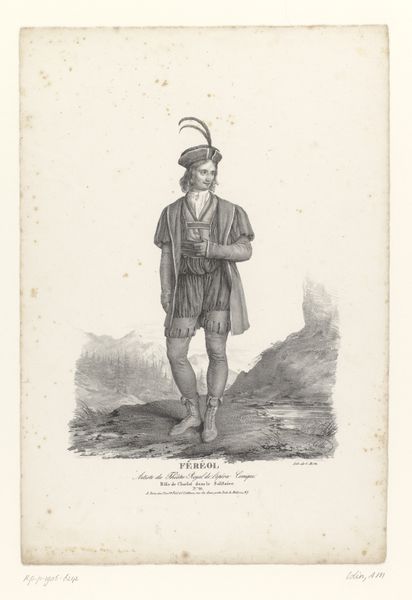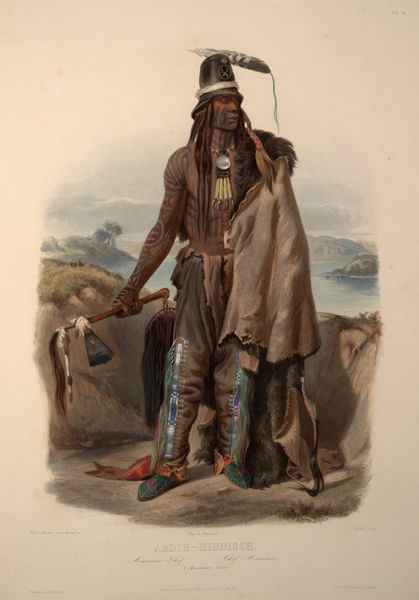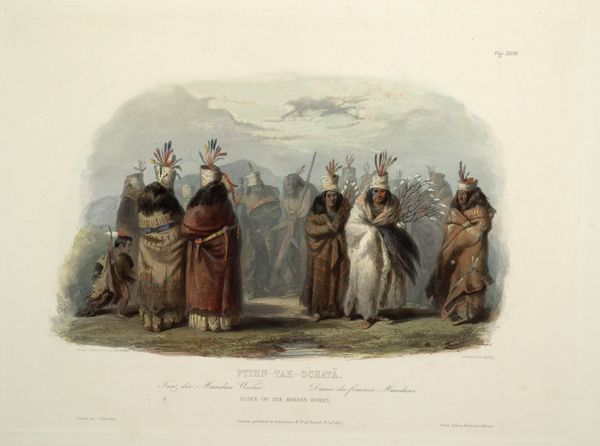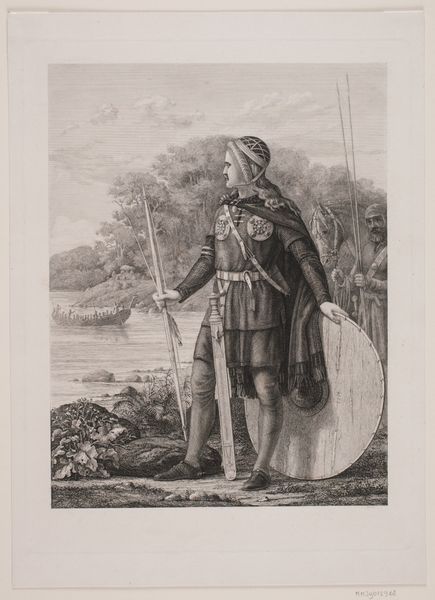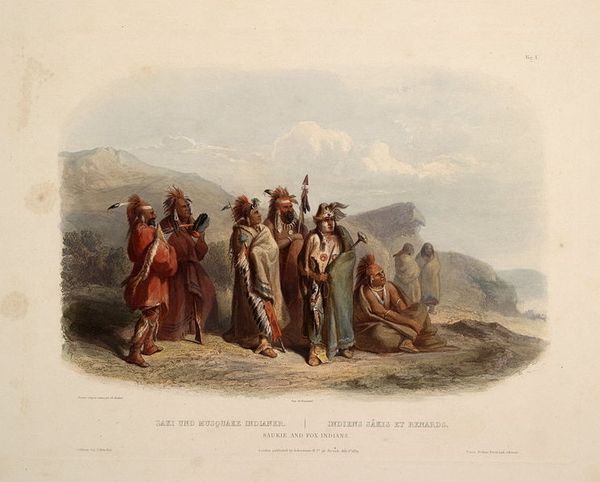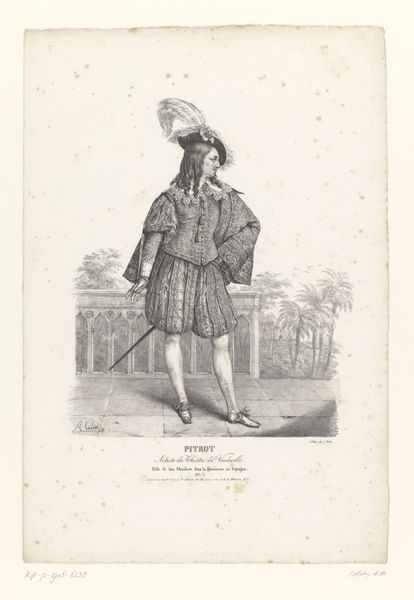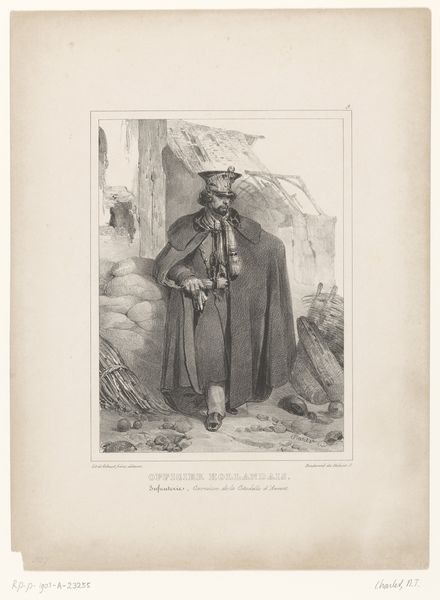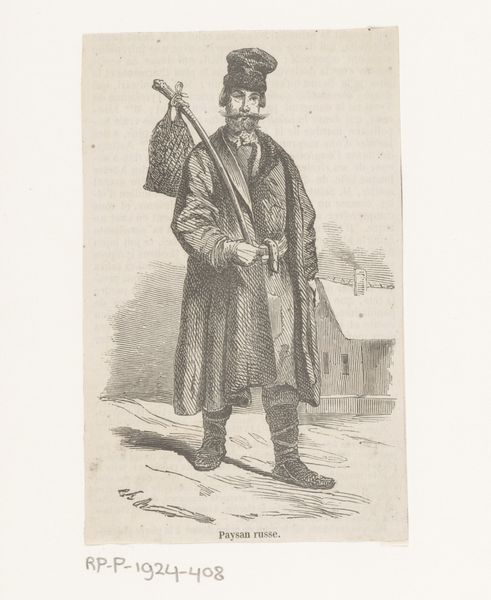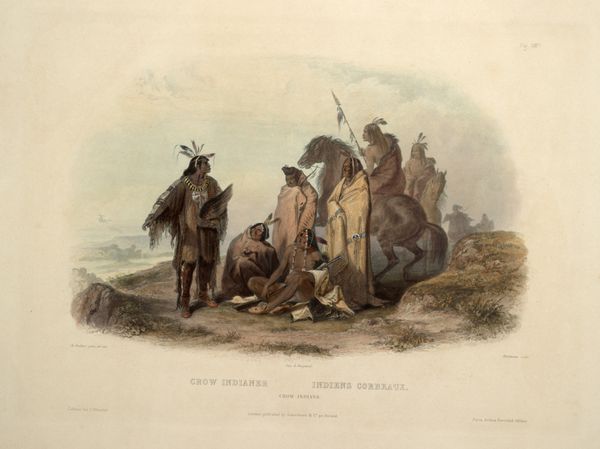
Mexkemahuastan, Chief of the Gros-Ventres of the Prairies, plate 20 from Volume 1 of 'Travels in the Interior of North America' 1843
0:00
0:00
karlbodmer
Private Collection
painting
#
portrait
#
painting
#
watercolour illustration
#
watercolor
#
indigenous-americas
Copyright: Public domain
Karl Bodmer made this print of Mexkemahuastan, a chief of the Gros Ventres tribe, as part of his travels in North America in the 1830s. It’s made using a technique called aquatint, a printmaking process that simulates the effects of watercolor. Look closely, and you'll see how the texture of the paper becomes part of the image. The tones are created by applying powdered resin to the plate, then using acid to bite into the metal. This creates a granular surface that holds ink, resulting in soft, atmospheric effects. The hand-coloring, applied afterwards, gives a sense of immediacy and presence to the chief’s portrait. The artistry here lies not only in Bodmer's skill as a draughtsman, but also in his mastery of the printing process. By combining technical expertise with artistic vision, Bodmer created a work that invites us to consider the intersection of culture, representation, and the material world. It also hints at the industrialization of image-making that was transforming the world at this time.
Comments
No comments
Be the first to comment and join the conversation on the ultimate creative platform.
